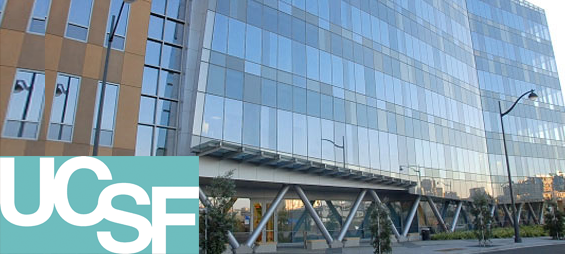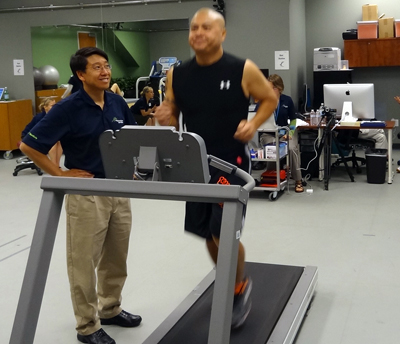Bright Lights, Big Data
Armed with an arsenal of old running shoes in my backpack, I checked in at the UCSF RunSafe Clinic a few months ago to undergo a comprehensive assessment of my running form. I brought the shoes so that one of the Clinic experts could take a look at the wear and tear on the soles of the shoes as part of the assessment.
It was the wear and tear on the rest of me that prompted me to search for the clinic. Although I have been a runner since the age of 14, my casual running in the past several years had been causing chronic Achilles tendonitis. I’d tried some things on my own; a switch to minimal shoes and a shortening of my stride helped a lot. But frequently sore feet and occasionally injured ankles were still slowing me down. I was an ideal client for expert analysis by professionals at the RunSafe Clinic.
Dr. Anthony Luke opened the RunSafe Clinic in 2008. His was one of the first such clinics and he has amassed a significant amount of data on almost 2000 runners since his clinic opened. With such a large trove of data on runners who have visited his clinic, Dr. Luke is able to provide a comprehensive assessment of a runner’s strengths and challenges, and make evidence-based recommendations for runners who want to avoid injury and improve fitness.
The RunSafe Clinic assessment involves a four-station circuit. At the first station, a physical therapist (P.T.) examined the soles of the ten shoes I had carried with me. He then closely examined my feet, manipulating them to test flexibility and strength.
At the second station, a P.T. asked me to recline on a table while she manipulated my legs and asked me to respond to force. She also tested my balance and stamina with a series of exercises.
A nutritionist at the third station provided helpful suggestions to me on pre-race, race, and post-race fueling that took into account my fitness level, my age, and my race goals.
The fourth station provides the stark truth I was looking for in my assessment. After adorning my feet, ankles, calves, knees, and hips with small, neon-pink squares of duct tape, I stepped on a treadmill surrounded by bright lights and video cameras, and embarked on an easy 15-minute run.
At the end of the session, the videotape of myself running in slow motion was astonishing for me to watch. The RunSafe experts identified several aspects of my gait that were causing my aches and pains. They made an important recommendation: strengthen your glutes if you want to be a stronger, faster, and injury-free runner. And they sent me home with a DVD of the videotape they had made, and a series of ten exercises for me to begin immediately.
In a future post, I will be writing about my experience with the exercises and the impact they have had with my running and general fitness.



